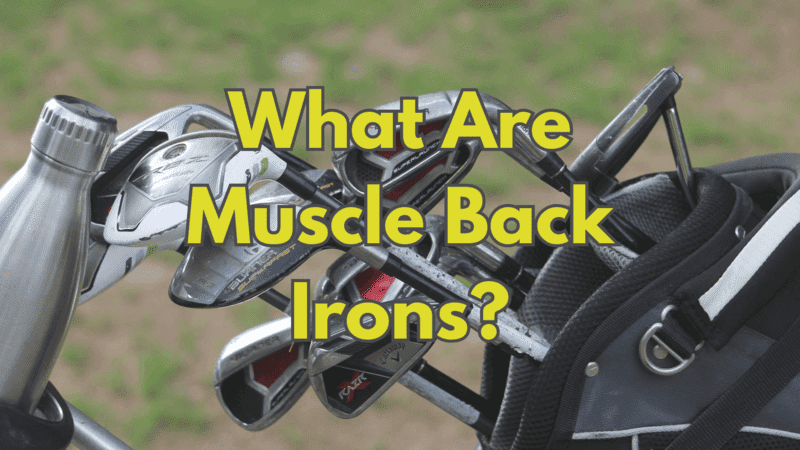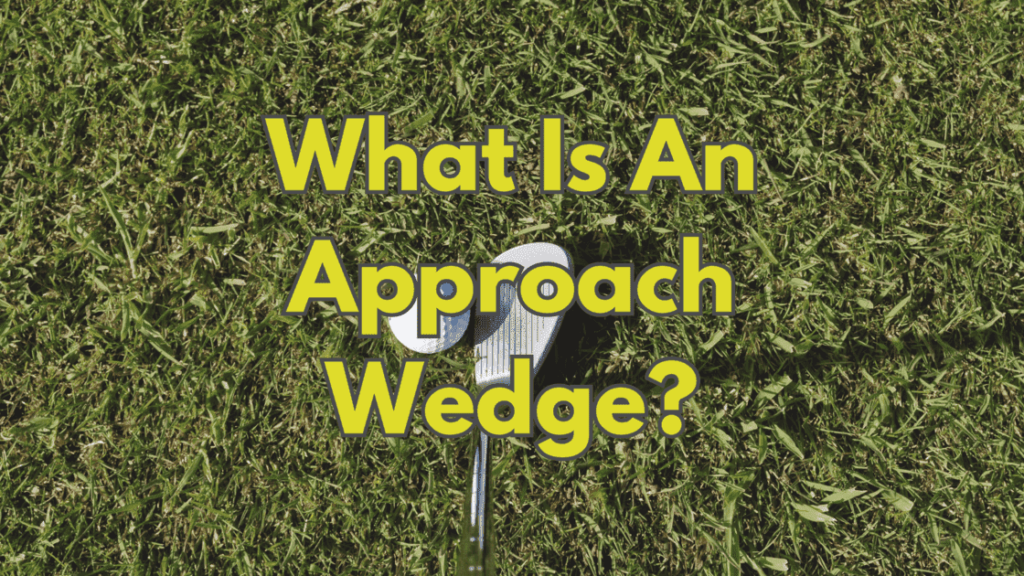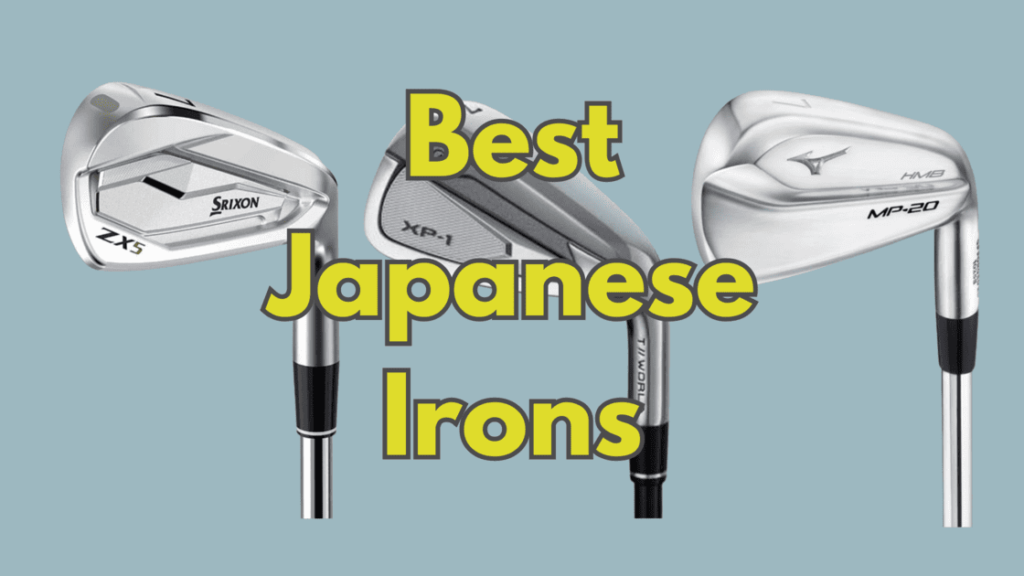If you’ve ever strolled the lush, rolling greens of a golf course, you’ve probably seen the pros swinging those sleek, sexy clubs that seem more like works of art than sports equipment. They’re called “muscle back irons,” and they’re the secret sauce behind some of the most jaw-dropping shots you’ve ever seen on TV. But what are muscle back irons, and why are they the darlings of the golf world?
In this blog post, we’re diving headfirst into the world of these legendary clubs, unearthing the secrets behind their name and revealing why they’re the ultimate weapon of choice for golfers who demand nothing but the best from their gear. Whether you’re a seasoned golf aficionado or a newbie itching to learn, get ready to tee off on a journey that will have you swinging with confidence and style. So, grab your favorite putter, slip on your plaid pants, and let’s discover the magic of these irons!
The Origin and Evolution of Muscle Back Irons
The history of muscle back irons can be traced back to the early days of golf. These irons were initially crafted using forged steel and featured a blade-like design with a thicker pad located behind the striking area. This design allowed for better control and feel, making muscle backs a popular choice among skilled golfers.
Over the years, the evolution of muscle back irons has seen advancements in both design and materials. Manufacturers have introduced improvements in weighting and balance, leading to increased forgiveness and playability. The incorporation of technology, such as computer-aided design and manufacturing, has further revolutionized the production process. This results in more precise and consistent muscle backs.
This continuous evolution ensures that golfers can benefit from the latest advancements in technology and design. Which allows them to maximize their performance on the course.
Understanding the Design and Construction of Muscle Back Irons
Muscle back irons, also known as blade irons, are a classic design in the realm of golf clubs. These irons feature a solid, compact construction that is preferred by many skilled golfers for its precision and control. The design of these irons focuses on distributing the weight evenly throughout the clubhead. Which results in a consistent and pure strike. This balanced weight distribution allows golfers to have more control over their shots and achieve a greater level of feel and feedback.
When it comes to the construction of muscle back irons, manufacturers utilize high-quality materials to ensure durability and performance. Typically, the clubhead is forged from a single piece of steel, providing a dense and solid feel upon impact. The thin face of the iron allows for enhanced responsiveness, while the narrower sole allows for better turf interaction. This construction allows golfers to achieve greater shot-shaping capabilities and workability, making muscle backs a favorite among those with a higher skill level.
Additionally, the design often includes a minimal cavity on the back of the iron, providing some forgiveness while still maintaining the desired characteristics of a muscle back iron.
The Key Features and Benefits of Muscle Back Irons
Muscle back irons are highly regarded among golf enthusiasts for their exceptional performance and unique features. One key feature that sets these irons apart is their blade-like design. Unlike cavity backs, muscle backs have a solid back with minimal forgiveness. This design allows for a more direct transfer of energy from the clubface to the golf ball, resulting in improved distance and shot control.
Moreover, the compact shape of muscle back irons provides golfers with enhanced workability. This allows them to shape shots effortlessly and precisely. Whether it’s a slight fade or a draw, these irons give skilled golfers the ability to manipulate the ball flight according to their desired trajectory. This level of control is indispensable, particularly for players who want optimal precision in their shots.
Another benefit of muscle back irons is the superior feel they offer upon impact. Due to the absence of a cavity, golfers can fully experience the sensation of striking the ball with precision and accuracy. This direct feedback allows players to better understand their swing and make necessary adjustments on the course.
Furthermore, the solid construction of these irons minimizes the vibration upon impact. Thus ensuring a smooth and comfortable feel in the hands. Golfers who prioritize feedback and the sensory experience of their shots will find muscle back irons to be a remarkable choice. With their blade-like design and exceptional feel, muscle back irons provide golfers with the necessary tools to elevate their game and reach new levels of performance.
How Muscle Back Irons Differ from Cavity Back Irons
Muscle backs and cavity backs are two distinct categories of golf clubs, each with its own design and performance characteristics. The main point of differentiation lies in the weight distribution and construction of these iron types. Muscle backs feature a solid, compact design with a blade-like appearance. The weight of the club is concentrated directly behind the clubface, resulting in a smaller sweet spot. This narrower sweet spot demands a higher level of skill and precision from the golfer, making muscle backs more suitable for advanced players who possess consistent ball-striking abilities.
In contrast, cavity back irons incorporate a cavity or hollowed-out design at the back of the clubhead. This enables the redistribution of weight around the perimeter, creating a larger sweet spot and more forgiveness on off-center hits. The cavity back design facilitates higher launch angles and increased distance. Which makes them a popular choice for amateur and higher handicap golfers. The generous forgiveness of cavity back irons allows for improved accuracy and consistency. Making it easier to achieve straighter and more controlled shots.
The Impact on Shot Control and Feel
Muscle back irons have a significant impact on shot control and feel for experienced golfers. These irons are specifically designed to provide better control over the trajectory, spin, and direction of the ball. With their blade-like construction and concentrated weight distribution, muscle back irons allow players to manipulate each shot with precision.
The design of muscle backs, with their thin and compact clubheads, enables golfers to feel the connection between the clubface and the ball more intimately. This feedback is crucial for skilled players who rely on sensing the impact to make necessary adjustments to their swing.
Furthermore, the concentrated weight behind the sweet spot of muscle back irons enhances the feel and allows golfers to sense the ball’s compression upon impact, further contributing to a heightened level of shot control. Overall, the impact of these irons on both shot control and feel is undeniable, making them a popular choice for accomplished players seeking maximum control over their game.
Muscle Back Irons: Ideal for Skilled Golfers or Suitable for All?
Muscle back irons have long been considered the gold standard for skilled golfers looking for precision and control in their game. Designed with a smaller clubhead and a center of gravity positioned closer to the face. These irons provide exceptional workability and shot shaping capabilities. Skilled golfers who have a consistent swing and well-developed technique can truly harness the full potential of muscle back irons. Thus allowing them to shape shots with ease and achieve a level of control that can enhance their overall performance on the course.
That being said, muscle back irons are not exclusively reserved for skilled golfers. While they do require a certain level of skill and proficiency to fully utilize their capabilities, they can also be a suitable option for intermediate players looking to improve their game. The forgiveness factor might be slightly lower compared to cavity back irons. But for those willing to put in the time and effort to master these irons, the rewards can be significant. The key lies in understanding your own skill level and determining if you are willing to invest the necessary time to adapt to the unique characteristics of muscle backs.
Tips for Choosing the Right Muscle Back Irons for Your Game
When it comes to choosing the right muscle back irons for your game, there are a few key factors to consider. Firstly, it’s important to assess your skill level and playing style. These irons are typically designed for skilled golfers who have a consistent swing and accuracy, so if you’re a beginner or struggle with shot control, they may not be the best fit for you. However, if you’re an experienced golfer looking for greater shot shaping ability and feedback, muscle back irons could be the perfect choice.
Another crucial aspect to consider is the feel and feedback of the club. Muscle back irons are known for providing a soft, solid feel at impact, allowing you to better sense the ball and control your shots. This can greatly enhance your confidence and overall performance on the course.
Additionally, pay attention to the weight and balance of the irons. Each golfer has their own preferences when it comes to club weight, so make sure to test out different options to see what feels most comfortable and natural for you. Ultimately, finding the right irons for your game boils down to understanding your skill level, evaluating the club’s feel and feedback, and considering your personal preferences in terms of weight and balance.
Best Muscle Back Iron Sets On Amazon
| Image | Product | Rating | Price |
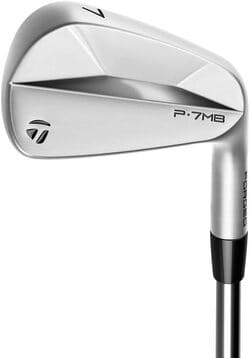
|
TaylorMade GolfP7MB 2023 Irons Iron Set |
9.5
|
|
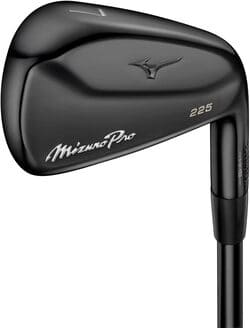
|
Mizuno Pro225 Black Golf Iron Set |
9.5
|
|
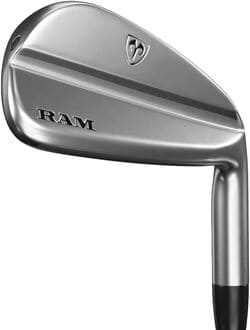
|
Ram GolfFX77 Players Distance Iron Set |
9.0
|
The Pros and Cons of Playing with Muscle Back Irons
Pros
Muscle back irons offer several advantages for skilled golfers. One of the main benefits is the enhanced shot control they provide. The design of these irons allows for greater precision and manipulation of the ball flight. Skilled golfers can effortlessly shape their shots, whether it be a fade, draw, or a high or low trajectory. This level of control can be especially beneficial in challenging situations where accuracy is crucial, such as hitting approach shots into tight pin positions or navigating around hazards.
Another advantage of muscle backs is the exceptional feel they offer. With their forged construction, these irons provide a soft and responsive sensation upon impact. Golfers can experience an unmistakable feedback that allows them to better gauge their shots and make necessary adjustments. The ability to feel the contact between the clubface and the ball provides a level of confidence and connection that is highly valued by skilled golfers.
Cons
While muscle back irons have their merits, they may not be suitable for all golfers. One significant downside is the limited forgiveness these irons offer. Due to their compact design and thin clubface, muscle backs are less forgiving on off-center strikes compared to cavity backs. Golfers who struggle with consistency or have a slower swing speed might find it challenging to consistently hit the sweet spot, resulting in less distance and accuracy.
Additionally, the level of skill and technique required to effectively play with these irons cannot be ignored. These irons demand a higher level of proficiency and consistency in ball-striking. Novice or high-handicap golfers who have yet to master their swing mechanics may find muscle back irons challenging to use. It can take a considerable amount of practice and skill development to fully realize the advantages that muscle backs have to offer.
How to Properly Care for and Maintain Muscle Back Irons
To ensure the longevity and optimal performance of your muscle back irons, it is crucial to establish a regular care and maintenance routine. Firstly, after each round of golf, it is vital to clean the clubheads thoroughly. Gently scrub away any dirt or debris using a soft-bristled brush, paying special attention to the grooves. Avoid using harsh chemicals or abrasive materials that could potentially damage the delicate surface of the clubhead. Once cleaned, use a dry cloth to wipe the clubheads dry, ensuring that no moisture is left behind.
Furthermore, it is essential to keep the clubheads protected from excessive wear and tear. When not in use, store your muscle back irons in a padded headcover or a specialized golf bag compartment designed to prevent the clubs from clanking against each other. This will help prevent unnecessary dings or scratches that could affect both the aesthetics and performance of the irons. Additionally, regular inspection of the clubheads is recommended to identify any signs of damage or wear. If you notice any issues like bent shafts or loose clubheads, it is best to have them repaired by a professional club fitter to maintain the integrity of your muscle back irons.
FAQs
What are muscle back irons?
Muscle back irons are a type of golf club that have a solid back or “muscle” behind the clubface. This design provides a traditional look and feel, and is often preferred by skilled golfers for its shot control and feedback.
How do muscle back irons differ from cavity back irons?
Muscle back irons have a solid back, while cavity back irons have a hollowed-out back. This means that muscle back irons offer less forgiveness on mishits but more control and feel, while cavity back irons provide more forgiveness but may sacrifice some shot control.
Are muscle back irons suitable for all golfers?
Muscle back irons are generally recommended for skilled golfers with consistent ball-striking abilities. For beginners or high-handicap players, cavity back irons may be more forgiving and easier to use.
What are the key features and benefits of muscle back irons?
Muscle back irons offer enhanced shot control, feel, and feedback. They provide skilled golfers with the ability to shape shots and manipulate ball flight. The solid construction of muscle back irons also contributes to their durability and longevity.
How can I choose the right muscle back irons for my game?
When selecting muscle back irons, consider factors such as your skill level, swing characteristics, and personal preferences. It is recommended to get fitted by a professional who can analyze your swing and make appropriate recommendations based on your individual needs.
How should I care for and maintain muscle back irons?
To properly care for muscle back irons, regularly clean the clubheads with a soft brush or cloth to remove dirt and debris. It is also important to store them in a dry place and avoid exposing them to excessive moisture. Additionally, periodically check the grips and shafts for any signs of wear and replace them as needed.
